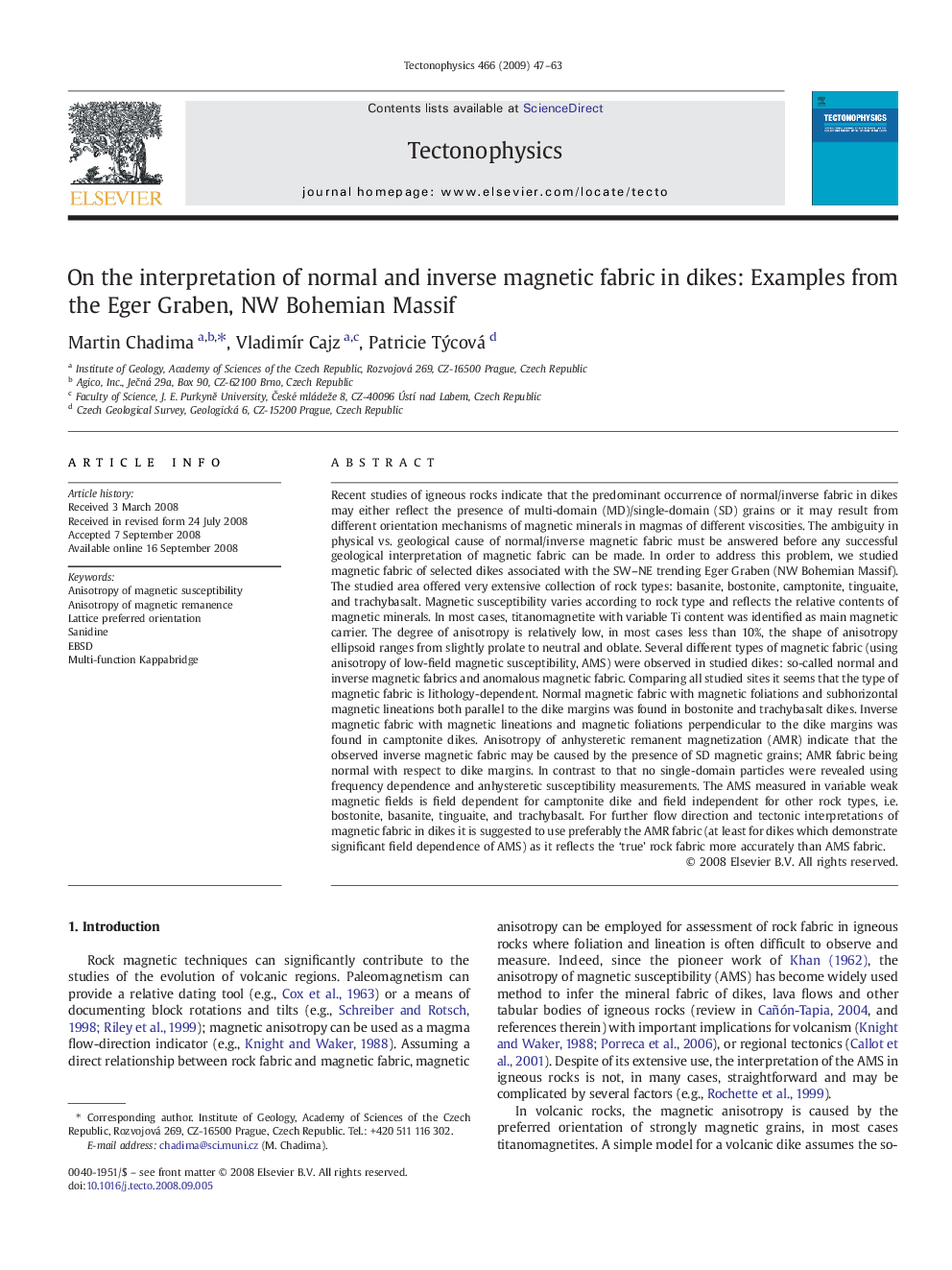| کد مقاله | کد نشریه | سال انتشار | مقاله انگلیسی | نسخه تمام متن |
|---|---|---|---|---|
| 4694322 | 1636899 | 2009 | 17 صفحه PDF | دانلود رایگان |

Recent studies of igneous rocks indicate that the predominant occurrence of normal/inverse fabric in dikes may either reflect the presence of multi-domain (MD)/single-domain (SD) grains or it may result from different orientation mechanisms of magnetic minerals in magmas of different viscosities. The ambiguity in physical vs. geological cause of normal/inverse magnetic fabric must be answered before any successful geological interpretation of magnetic fabric can be made. In order to address this problem, we studied magnetic fabric of selected dikes associated with the SW–NE trending Eger Graben (NW Bohemian Massif). The studied area offered very extensive collection of rock types: basanite, bostonite, camptonite, tinguaite, and trachybasalt. Magnetic susceptibility varies according to rock type and reflects the relative contents of magnetic minerals. In most cases, titanomagnetite with variable Ti content was identified as main magnetic carrier. The degree of anisotropy is relatively low, in most cases less than 10%, the shape of anisotropy ellipsoid ranges from slightly prolate to neutral and oblate. Several different types of magnetic fabric (using anisotropy of low-field magnetic susceptibility, AMS) were observed in studied dikes: so-called normal and inverse magnetic fabrics and anomalous magnetic fabric. Comparing all studied sites it seems that the type of magnetic fabric is lithology-dependent. Normal magnetic fabric with magnetic foliations and subhorizontal magnetic lineations both parallel to the dike margins was found in bostonite and trachybasalt dikes. Inverse magnetic fabric with magnetic lineations and magnetic foliations perpendicular to the dike margins was found in camptonite dikes. Anisotropy of anhysteretic remanent magnetization (AMR) indicate that the observed inverse magnetic fabric may be caused by the presence of SD magnetic grains; AMR fabric being normal with respect to dike margins. In contrast to that no single-domain particles were revealed using frequency dependence and anhysteretic susceptibility measurements. The AMS measured in variable weak magnetic fields is field dependent for camptonite dike and field independent for other rock types, i.e. bostonite, basanite, tinguaite, and trachybasalt. For further flow direction and tectonic interpretations of magnetic fabric in dikes it is suggested to use preferably the AMR fabric (at least for dikes which demonstrate significant field dependence of AMS) as it reflects the ‘true’ rock fabric more accurately than AMS fabric.
Journal: Tectonophysics - Volume 466, Issues 1–2, 2 March 2009, Pages 47–63